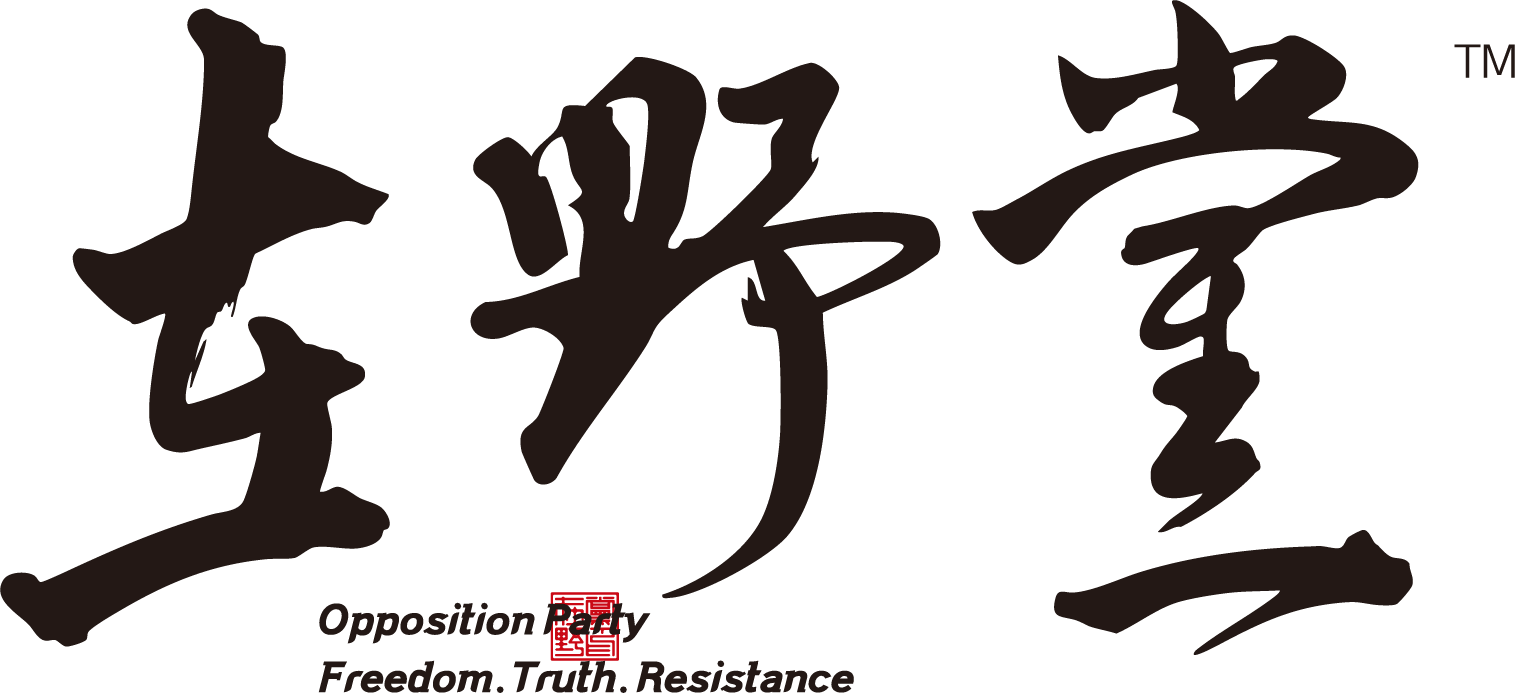——兼论其在专制体制后的平权效应
作者:劳绍海
责任编辑:罗志飞 校对:程筱筱 翻译:吕峰
今年10月11日,中国民主党在洛杉矶举行了《同庆中秋,共话民主》的聚会活动,聚会上除了中秋联谊和民运运动讲述外,重点讨论了罗伯特议事规则。
罗伯特议事规则与民主是息息相关的。民主不仅是一种政治制度,是对社会资源、生存尊严的冲突纷争机制,更是一种社会组织的精神与方法。它要求人们在共同体中以理性、平等、程序化的方式处理分歧。民主制度的生命力,往往不在于投票本身,而在于“如何讨论、如何做决定、如何服从多数而不压迫少数”。在这一点上,美国军事工程师亨利·罗伯特(Henry Robert)在十九世纪中叶所编纂的《罗伯特议事规则》(Robert’s Rules of Order),可谓为民主的日常运作提供了一个精密的“程序框架”。
这一规则体系在议会、公司理事会、非营利组织、教会、党团、军队、学生社团甚至社交游戏中被广泛采用。它规定了会议的召开程序、发言顺序、动议与修正、表决与记录的方式。表面上,它只是“会议管理”的手册;但在深层意义上,它体现了民主精神中最核心的一点:通过制度化程序来约束权力,保障平等表达,并以透明的方式达成集体决策。
本文将从三个层面展开:首先,分析罗伯特议事规则与民主制度的内在关联;其次,探讨当这种规则被引入非民主体制、尤其是共产独裁体系的基层组织时,如何反而促进了一种“程序化的权利保护”;最后,以“被斗争失败一方的权贵家族”为例,说明即便在权力高度集中的体制下,程序化的民主机制仍可能成为社会稳定与公平的隐性支柱,从而慢慢完成社会转型为民主社会。
一、罗伯特议事规则的民主精神
1. 平等与程序的结合
在民主政治的传统中,“平等”是价值目标,“程序”是实现路径。罗伯特议事规则要求每一位成员,无论其地位高低,均有权提出议案、质询、发言与表决。这种形式上的平等,是防止权力垄断的制度保障。例如,在议事过程中,“动议”(motion)必须得到“附议”(second)后方可进入讨论阶段。这一设计防止了任何个人垄断议题。发言顺序通常由主持人依次点名,且要求反对与支持双方轮流发言。即使是少数派,也有机会表达异议并被正式记录在案。这正是“少数服从多数,多数尊重少数”的生动体现。
2. 冲突的制度化
民主并非消除冲突,而是把冲突转化为制度化的讨论。罗伯特议事规则把情绪化的政治对立,转化为可管理的“程序竞争”。发言需针对议题,修正案必须明确具体,投票必须公开或依规定方式进行。这使得政治过程不再依赖领袖的个人威望,而依赖于程序的正当性。这种机制的意义在于:即便结果不公,过程仍可信,以后仍可通过词机制来解决冲突。正如政治学家达尔(Robert Dahl)所说:“民主的合法性,不在于决策结果,而在于公民在决策过程中的参与机会,即程序正义。”
3.罗伯特议事规则与民主制度的互补性
罗伯特议事规则并非独立于民主制度存在,它是民主制度的“操作系统”。民主宪政提供了权力结构,议事规则则提供了权力运行的细节逻辑。在美国的地方政府、学校董事会乃至军队委员会中,罗伯特议事规则让民主不流于口号,而成为可执行的行动方案。它让少数派的声音在被否决时仍被尊重,让多数派的决策在被执行时仍具合法性。换言之,它不是民主的象征,而是民主的机制。
二、专制体制下的意外效应:程序的自我扩散
有趣的是,罗伯特议事规则并非只能在民主国家中运作。当它被引入非民主体制内部,尤其是高度集中的共产党政权体系时,常常会产生一种“程序性张力”——它在表面服从权威的同时,也在内部重塑权力关系。
1. 从集中到分权的细微过渡
共产党政权的组织原则是“民主集中制”:下级服从上级,个人服从组织,少数服从多数。表面上,这与罗伯特议事规则的“少数服从多数”相似,但实质不同——前者是权力指令,后者是程序共识。天壤之别的是:人是利益的动物,专制独裁者不可能是程序正义的化身。然而,在许多共产党国家的地方基层组织(如工会、职代会、村民自治组织)中,随着会议管理规范化,某些“罗伯特式”的程序被有意或无意地采用:谁可发言、如何提出议案、如何投票、如何记录决议。结果,这些看似无害的程序,反而为基层成员提供了一个有限但真实的表达空间。这种程序化表达使“权力命令”不再是单向的,而带有某种合法性约束。例如,在中国上世纪八九十年代的村民选举与职工代表大会中,“举手表决”与“会议记录”的规范化,让原本不被信任的投票过程获得了部分公信力。
2. 权利的“副产品”
程序化的民主机制,即使在独裁体制下,也会生成意想不到的权利副产品。因为一旦会议过程被固定、记录、归档,个人行为便可追溯;而追溯意味着问责。在苏联后期与中国改革初期,党内会议开始使用更系统的议事程序、会议纪要、投票统计。这些举措在本意上是为了提升“组织效率”,却客观上让下级有了某种“制度庇护”——任何命令都需有程序依据,任何处分都需有会议记录。这种形式的“程序防火墙”,在一定程度上减少了专断决策带来的任意伤害。
三、斗争失败者的意外保障
在极权体制下,“阶级斗争”常常意味着绝对的政治清算。历史上,被斗争的一方往往失去一切:财产、身份、发言权乃至生命。然而,当罗伯特议事规则式的程序逻辑渗透进体制运作后,即便是“失败者”,也开始获得某种象征性乃至实质性的保障。
1. 程序作为冷静的中介
斗争中最残酷的时刻,往往是激情压倒理性、群体压倒个人。当决策被迫经过会议程序、需要表决和记录时,程序成为理性的缓冲器。它迫使参与者停下来思考:“是否有正当理由?”、“是否应让对方陈述意见?”即使最终结论仍然不公,程序过程本身也在降低暴力的烈度。正因为此,部分共产党国家在经历“文化大革命”式的混乱后,开始重新强调“会议纪律”“发言秩序”“表决程序”,这正是社会对“程序文明”的重新追求。
2. 权贵家族的“程序庇护”
或许很多人痛恨专制体系中既得利益者,但是专制内也是有各种残酷的政治斗争。我们应当理性的,甚至可以功利地看待政治斗争,在政治斗争失败后,即便是曾经的权贵家族,也可能通过程序正义获得部分尊严的回归。以中国改革开放后的“平反”过程为例,许多在文革中被打倒的老干部、家属,之所以能获得平反与补偿,正是因为当年的会议记录、处分决议、档案程序被保留——这些文书成为程序正义的证据。换言之,程序留下了历史的凭证,也给了失败者复原的可能性。如果专制既得利益者对平民有犯罪则追责其犯罪事实,但是他如果政治斗争中失败了,失败者依然应能得到适当保护,与其犯罪事实独立处理。如果他没有犯罪,政治斗争失败者更需要得到保护,只有这样的社会制度可以体现民主体制的可贵,才会争取更多人的支持。如果民主体制的支持者量变到一定程度,将会引发质变,即向民主社会转型。
这正体现出罗伯特议事规则精神的深层力量:即便在非自由的环境下,制度化的程序正义仍然是权利最后的避难所。
结语、民主的普适逻辑:从规则到文化
罗伯特议事规则的成功,不仅因为它能组织会议,更因为它把“民主”转化为一种可操作的文化习惯。当人们习惯于等待发言顺序、习惯于以表决定夺、习惯于记录与归档,他们就不再是权力的被动接受者,而是制度的参与者。在这种文化内化之后,即使权力仍然集中,权力行使者也必须顾及程序的形式;而形式的约束,终将孕育出实质的约束,只要社会发展的时机成熟,很有可能会转型孕育出一个初级的民主社会。正如法律学者所言:“程序的形式化,往往是自由的开端。”
罗伯特议事规则的意义,远超会议管理。它代表的是一种“以规则约束权力、以程序平衡利益”的现代政治智慧,它是民主的种子与制度的延展。在民主社会,它是公民参与的操作指南;在专制社会,它是秩序中孕育公正的裂缝。当一个体制——即便是共产独裁体制——开始在内部采用程序化的决策方式,社会的政治文化便悄然发生变化:权力不再全然是意志的体现,而是程序的结果;决策不再只是斗争的胜利,而是规则下的妥协。而这种变化,正是民主的真正萌芽。
The Relationship Between Robert’s Rules of Order and Democracy— On Its Equalizing Effect in Post-Authoritarian Contexts
Author: Lao Shaohai
Editor: Luo Zhifei Proofreader: Cheng Xiaoxiao Translation: Lyu Feng
In October 2025, the China Democratic Party held a gathering in Los Angeles titled “Celebrating Mid-Autumn, Discussing Democracy.” Besides socializing and sharing experiences in the democratic movement, the discussion centered on Robert’s Rules of Order.
Robert’s Rules of Order are closely intertwined with democracy. Democracy is not merely a political system or a mechanism for managing conflicts over social resources and human dignity; it is also a spirit and method of social organization. It requires that members of a community handle disagreements through rational, egalitarian, and procedural means. The vitality of democracy lies not in voting itself, but in how discussions are conducted, how decisions are made, and how the majority rules without oppressing the minority. In this sense, the work of American military engineer Henry Martyn Robert—his Robert’s Rules of Order (first published in 1876)—provides a precise procedural framework for the daily operation of democracy.
This system of rules has been widely adopted in parliaments, corporate boards, nonprofit organizations, churches, parties, the military, student groups, and even social games. It stipulates how meetings are convened, who may speak, how motions and amendments are introduced, and how votes and records are conducted. On the surface, it is merely a manual for meeting management; on a deeper level, it embodies the core of democratic spirit: constraining power through institutionalized procedure, ensuring equality of expression, and achieving collective decisions transparently.
This essay proceeds in three parts: first, it examines the intrinsic relationship between Robert’s Rules and democratic governance; second, it explores how the rules, when introduced into non-democratic or authoritarian contexts (especially within Communist systems), can paradoxically foster procedural rights; and third, it uses the example of defeated political elites to show that even under concentrated power, procedural mechanisms may serve as a hidden foundation for social stability and fairness—gradually paving the way for democratic transformation.
I. The Democratic Spirit of Robert’s Rules of Order
1. The Fusion of Equality and Procedure
In the democratic tradition, equality is the value goal, and procedure is the path to achieve it. Under Robert’s Rules, every member—regardless of status—has the right to propose motions, question others, speak, and vote. This formal equality safeguards against monopolization of power. For example, a “motion” requires a “second” before discussion, preventing any individual from monopolizing the agenda. The order of speaking is controlled by the chair, with supporters and opponents alternating in debate. Even minority voices are guaranteed an opportunity to be heard and recorded. This is the living embodiment of the principle: “The minority must yield to the majority, but the majority must respect the minority.”
2. Institutionalizing Conflict
Democracy does not eliminate conflict—it institutionalizes it. Robert’s Rules transform emotional political opposition into manageable procedural competition. Remarks must stay on topic, amendments must be specific, and votes must follow defined methods. The process thus relies not on the charisma of leaders but on the legitimacy of procedure. Even when outcomes seem unfair, a credible process allows future conflicts to be resolved within the system. As political scientist Robert Dahl observed: “The legitimacy of democracy lies not in the outcome but in citizens’ equal opportunity to participate—in procedural justice.”
3. Complementarity with Democratic Institutions
Robert’s Rules do not exist apart from democratic systems; they function as the operating system of democracy. While constitutional democracy defines the structure of power, parliamentary procedure defines its functioning logic. In local governments, school boards, and even military committees across the United States, these rules ensure democracy is not just rhetoric but practice. They allow minority opinions to be respected even in defeat and majority decisions to carry legitimacy in execution. Thus, the rules are not symbols of democracy—they are its mechanism.
II. Procedural Spillover in Authoritarian Contexts
Interestingly, Robert’s Rules can operate even within non-democratic regimes. When introduced into highly centralized systems such as Communist bureaucracies, they often generate procedural tension: while outwardly obeying authority, they subtly reshape power relations.
1. From Centralization to Subtle Decentralization
Communist regimes follow the principle of “democratic centralism”: subordinates obey superiors, individuals obey the organization, the minority obeys the majority. Superficially, this resembles Robert’s “minority yielding to the majority,” but the essence differs: the former enforces authority, the latter builds consensus. Authoritarian rulers, driven by self-interest, cannot embody procedural justice. Yet, in many grassroots organs of Communist states—such as trade unions, workers’ congresses, or village committees—some Robert-like procedures have been unintentionally adopted: rules on who may speak, how to introduce motions, how to vote, how to record minutes. These seemingly harmless procedures have given members limited but genuine space for expression. Power directives thus became slightly more constrained by legitimacy. For example, in China’s 1980s–1990s village elections and workers’ congresses, standardized voting and minute-keeping granted the process partial credibility.
2. Rights as “By-Products”
Even in dictatorships, procedural mechanisms can yield unexpected rights. Once meeting processes are fixed, recorded, and archived, actions become traceable—and traceability means accountability. In the late Soviet Union and early reform-era China, formalized meeting minutes and vote tallies were introduced to improve “organizational efficiency.” Ironically, these created a kind of institutional shield: every order required procedural justification; every sanction required recorded authorization. This procedural firewall mitigated arbitrary power and the damage of unchecked command.
III. The Unintended Protection of the Defeated
Under totalitarianism, “class struggle” often entailed absolute political annihilation: the defeated lost property, status, voice, even life. Yet when procedural logic akin to Robert’s Rules permeates such systems, even “losers” may receive symbolic or substantive protection.
1. Procedure as a Rational Mediator
The most violent moments of political struggle arise when passion eclipses reason. If decisions must pass through meeting procedures—motions, debates, votes, minutes—procedure itself becomes a brake on violence. It forces participants to ask: “Is there a legitimate reason?” or “Should the other side be allowed to speak?” Even if the outcome remains unjust, procedural process tempers emotional extremity. After the chaos of China’s Cultural Revolution, renewed emphasis on “meeting discipline,” “order of speech,” and “voting procedures” reflected a social yearning for procedural civility.
2. Procedural Shelter for Former Elites
Even privileged elites in authoritarian regimes face ruthless internal purges. A rational—indeed utilitarian—view of such struggles shows that when formal procedure survives, it can protect dignity even for the fallen. During China’s rehabilitation period after the Cultural Revolution, many purged officials were restored precisely because their disciplinary records, meeting resolutions, and procedural documents survived. These archives provided evidence for procedural justice and enabled redress. In short, procedure preserved history and allowed recovery.
If a former powerholder has committed crimes, justice must address the crimes themselves—but political defeat alone should not erase procedural protection. Only such distinction between guilt and dissent reflects the moral superiority of democratic systems and attracts broader support. When that support reaches a critical mass, quantitative change turns into qualitative transformation: society moves toward democracy.
Thus, even within unfree environments, the spirit of Robert’s Rules demonstrates its deeper power: institutionalized procedure remains the final refuge of rights.
Conclusion: From Rules to Culture—The Universal Logic of Democracy
The success of Robert’s Rules lies not only in organizing meetings but in transforming democracy into a habitual culture. When people learn to wait for their turn to speak, to decide by vote, to document and archive decisions, they cease being passive subjects and become participants in governance. Once this culture internalizes, even concentrated power must respect procedural form; and formal constraint gradually breeds substantive constraint. As legal scholars note, “Formalization of procedure is often the beginning of liberty.”
The significance of Robert’s Rules goes far beyond meeting management. They embody the modern political wisdom of “constraining power by rules and balancing interests through procedure.” They are both the seed and the extension of democracy. In democratic societies, they guide civic participation; in authoritarian ones, they form cracks through which justice may germinate. When even a totalitarian regime begins adopting procedural decision-making, its political culture begins to shift: power becomes the outcome of rules rather than will; decisions become compromises under law rather than triumphs of struggle. And such transformation—quiet but profound—is the true sprout of democracy.


张宇-rId7-1266X950.png?w=218&resize=218,150&ssl=1)
赵雪峰-rId5-1050X862.jpeg?w=218&resize=218,150&ssl=1)
张宇-rId6-1252X934.png?w=218&resize=218,150&ssl=1)
冯仍-rId7-672X505.jpeg?w=218&resize=218,150&ssl=1)
张致君-rId6-1076X1280.jpeg?w=218&resize=218,150&ssl=1)

张致君-rId5-1024X768.jpeg?w=100&resize=100,70&ssl=1)

